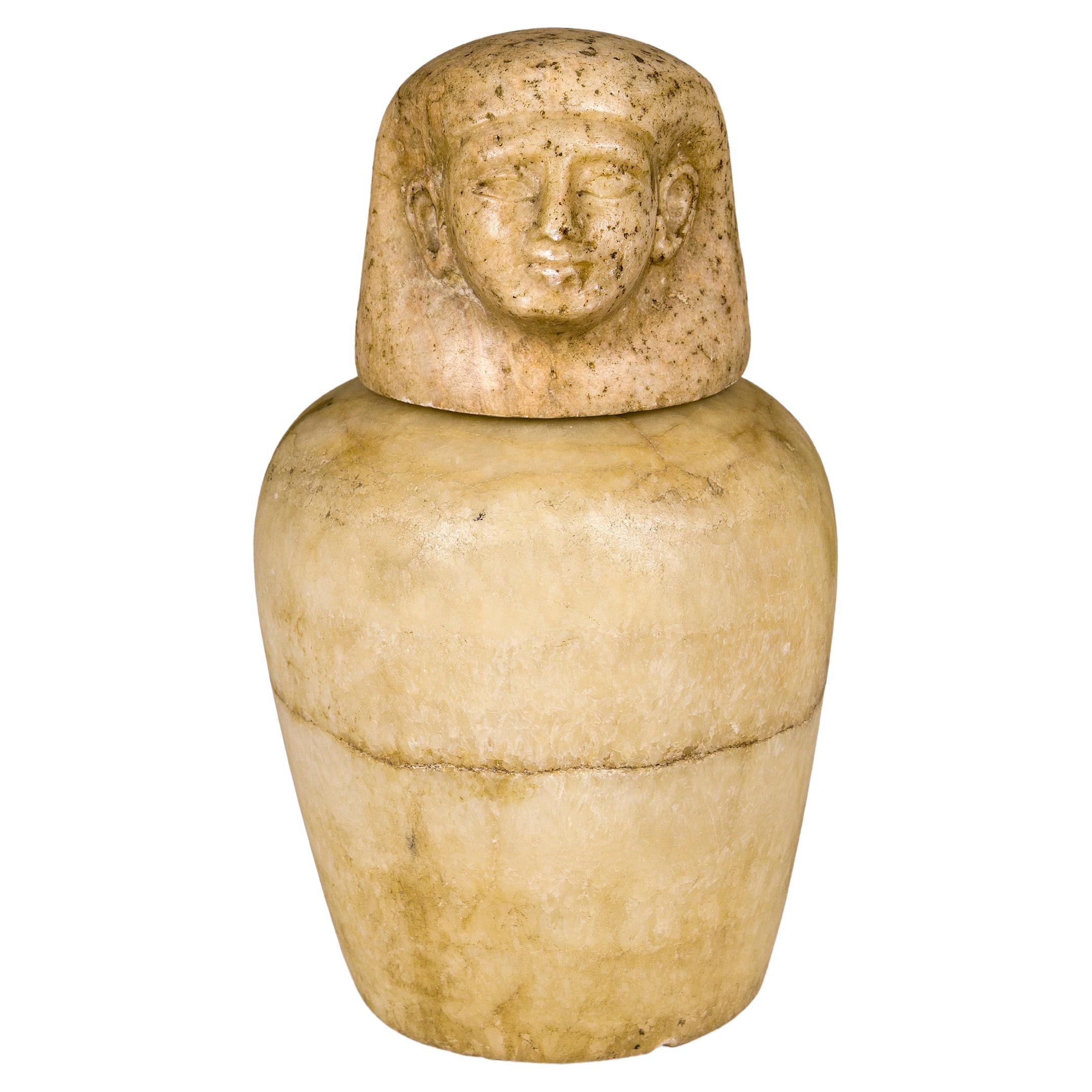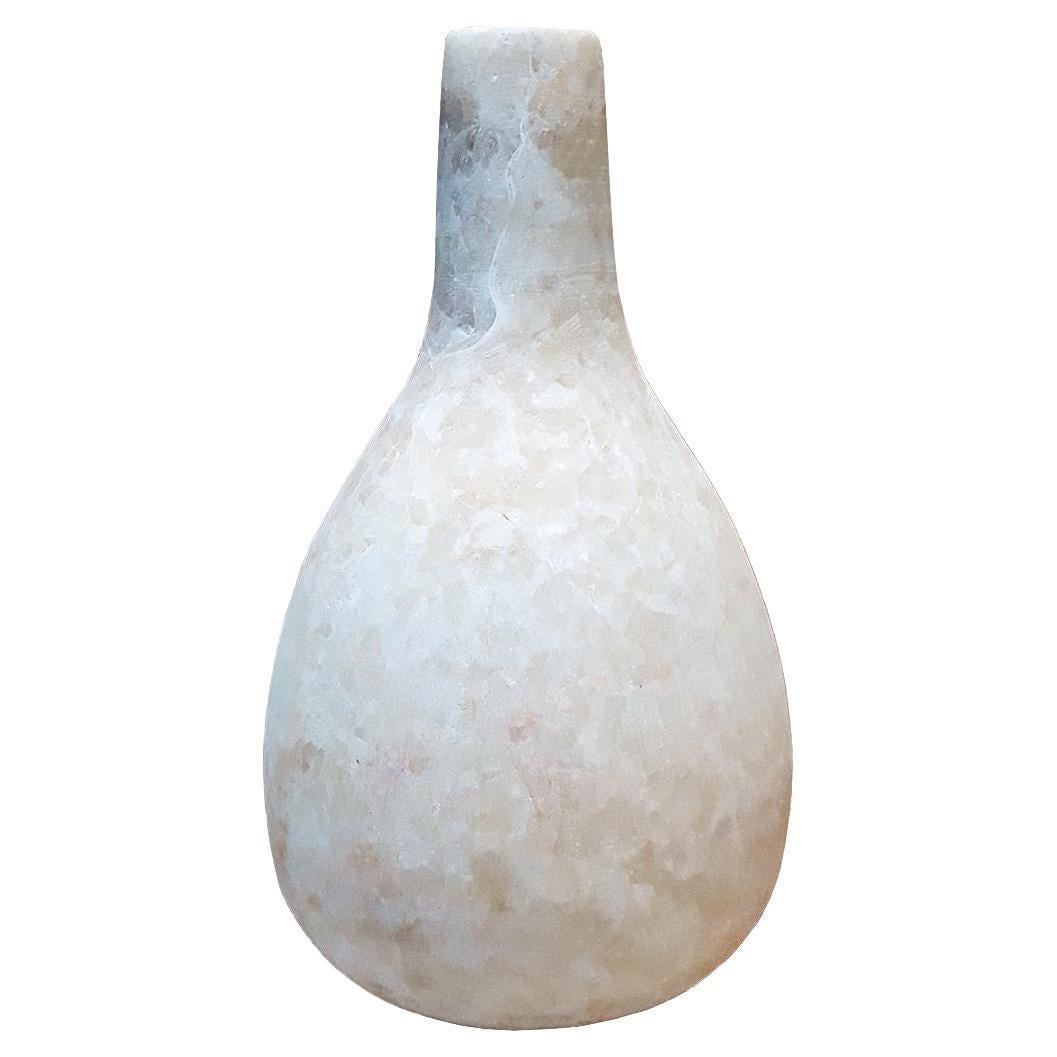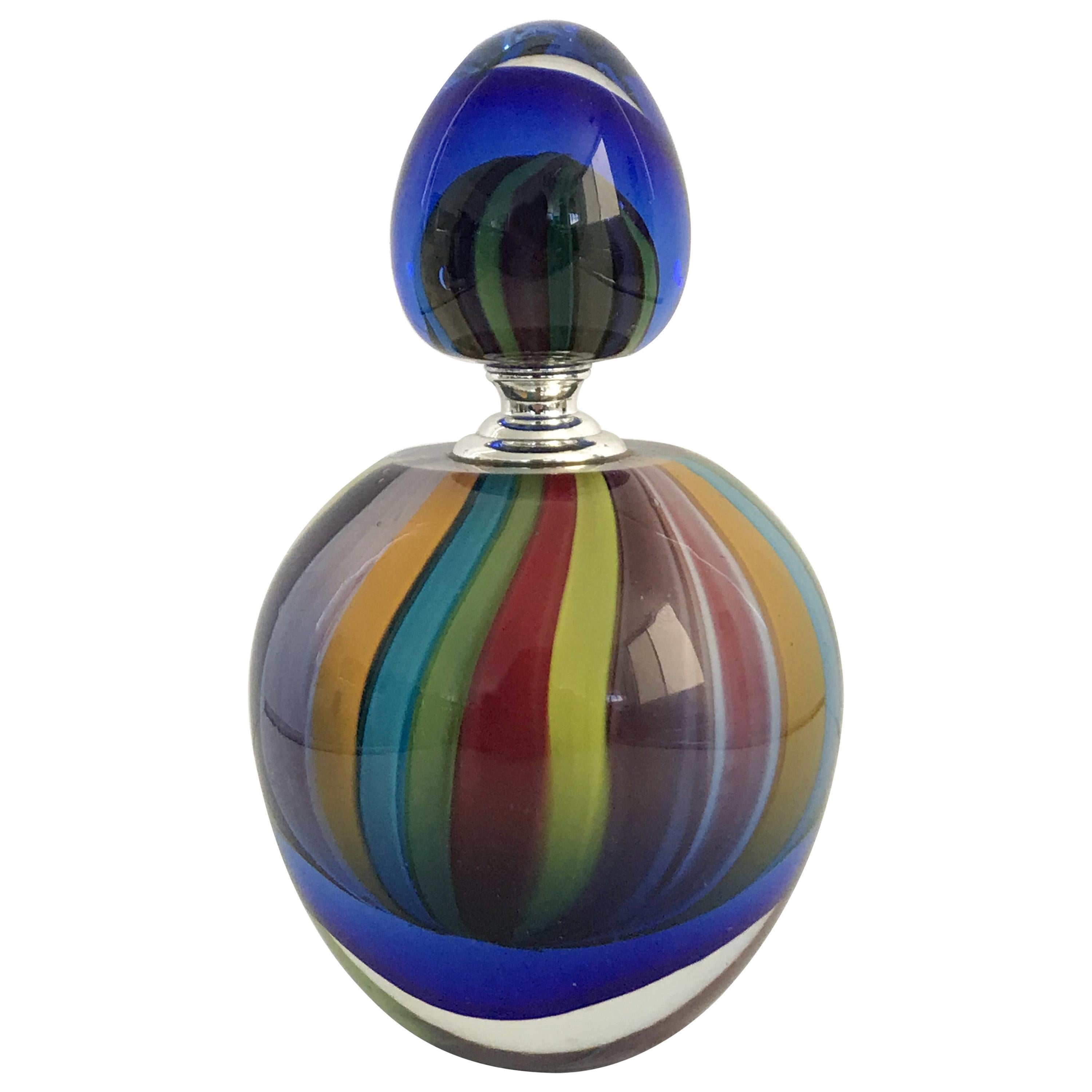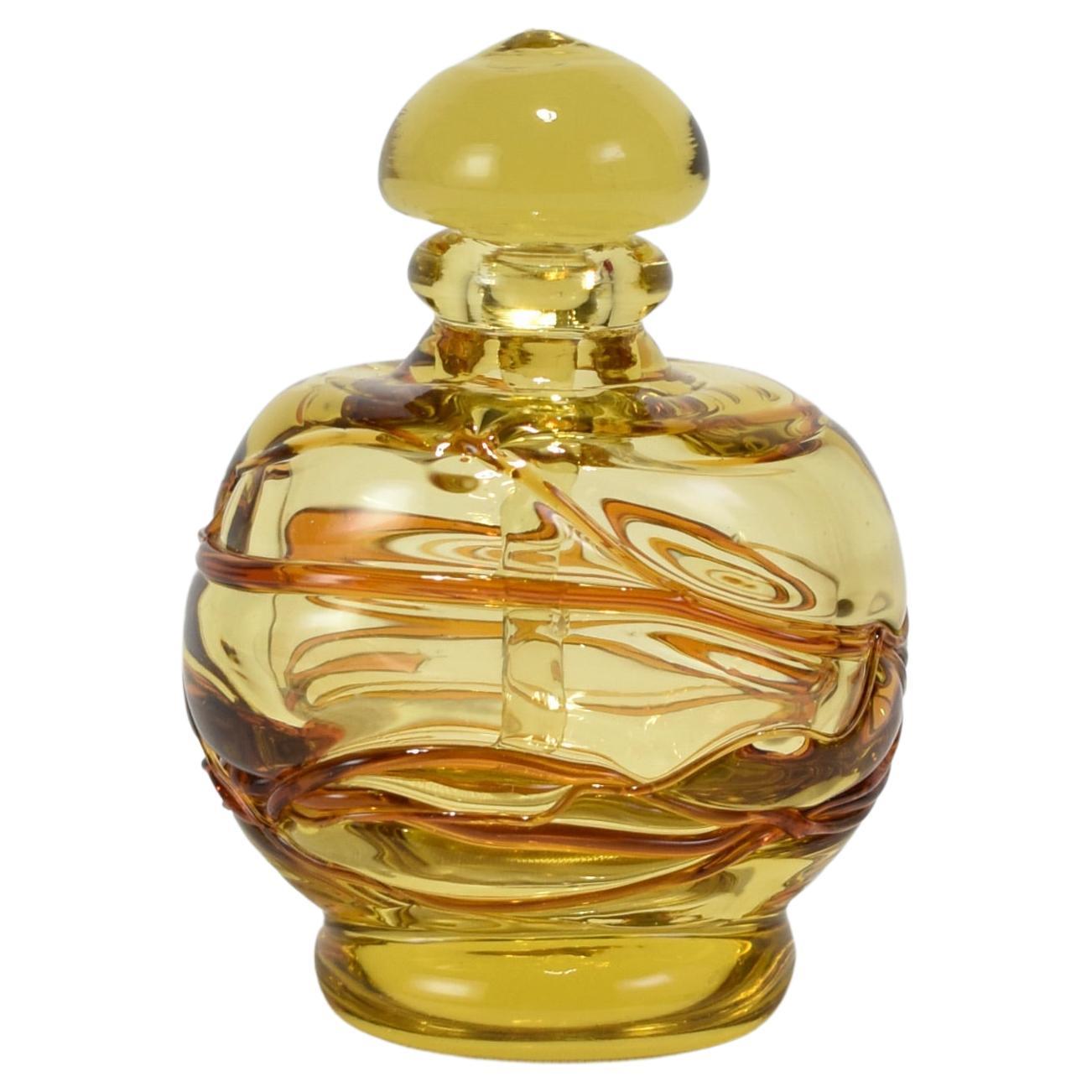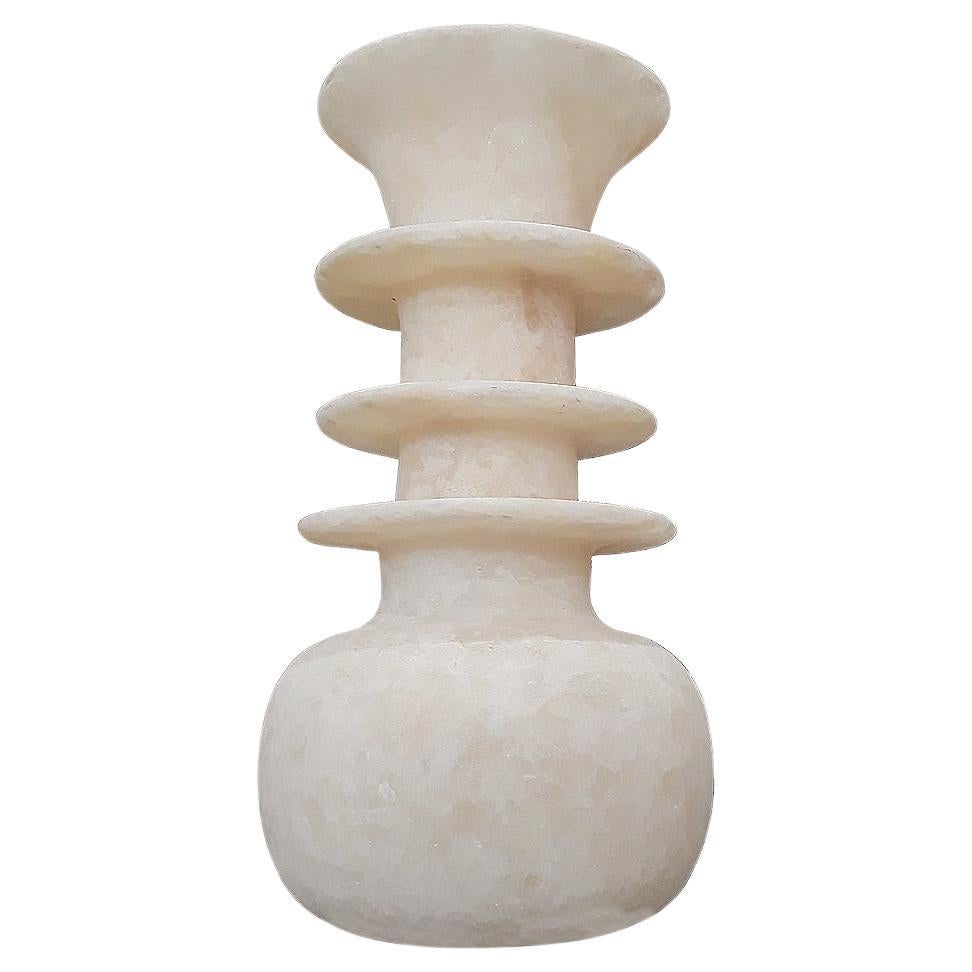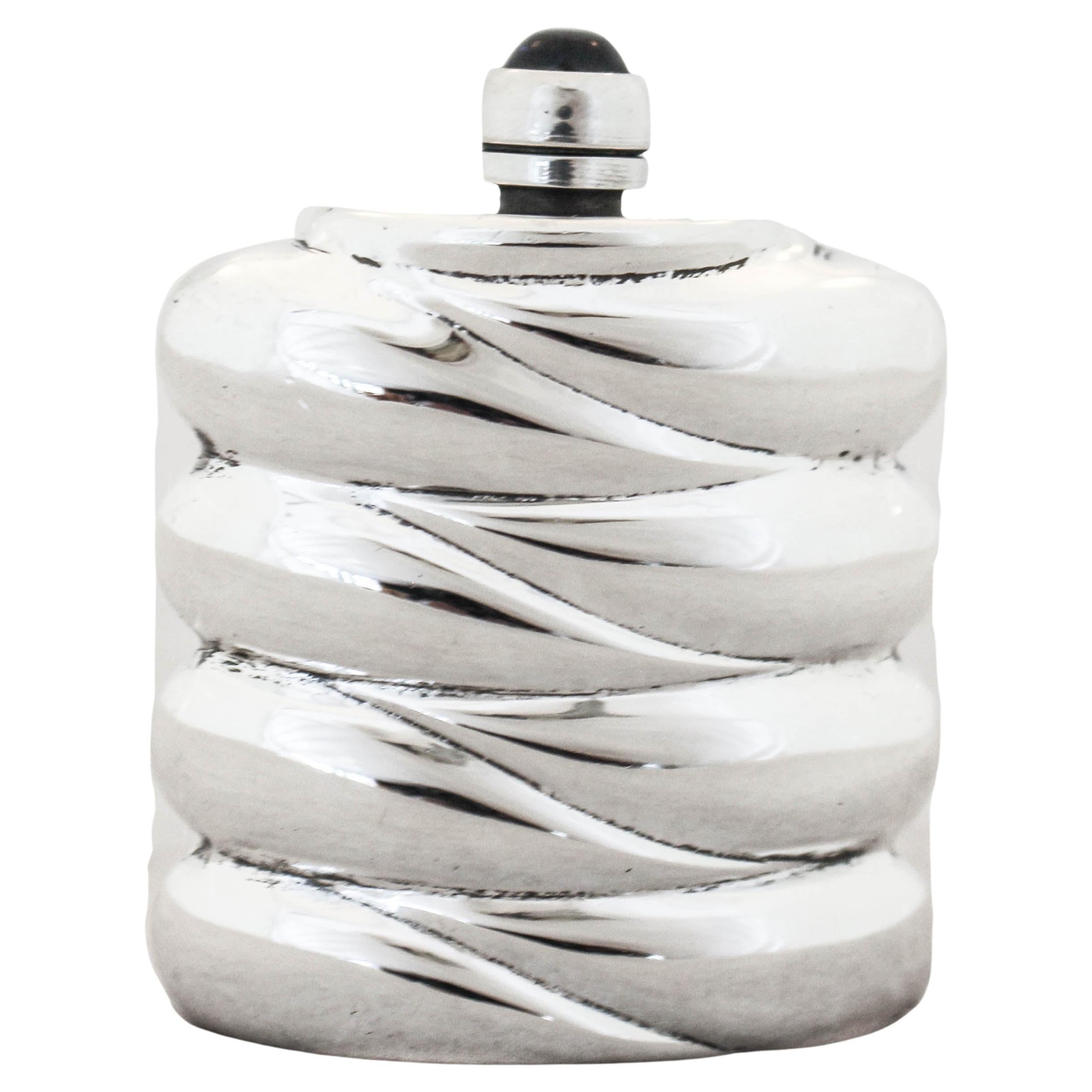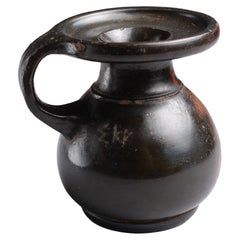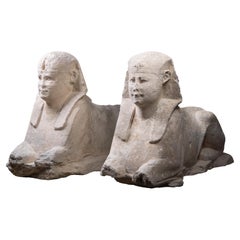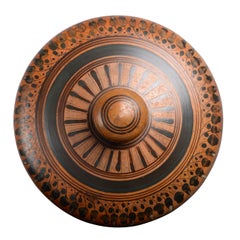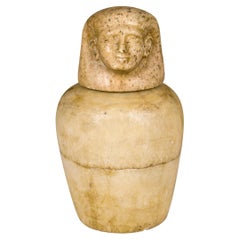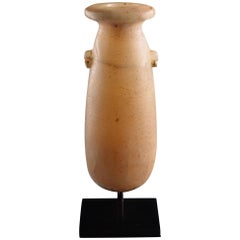
Ancient Egyptian Alabaster Perfume Bottle - 664 BC
View Similar Items
Want more images or videos?
Request additional images or videos from the seller
1 of 6
Ancient Egyptian Alabaster Perfume Bottle - 664 BC
About the Item
- Dimensions:Height: 4.25 in (10.8 cm)Diameter: 1.5 in (3.81 cm)
- Style:Egyptian (Of the Period)
- Place of Origin:
- Period:
- Date of Manufacture:664 BC
- Condition:Unrestored and mounted on a bespoke bronze stand.
- Seller Location:London, GB
- Reference Number:1stDibs: LU105229251943
About the Seller
5.0
Recognized Seller
These prestigious sellers are industry leaders and represent the highest echelon for item quality and design.
Established in 2008
1stDibs seller since 2014
100 sales on 1stDibs
Typical response time: 8 hours
Associations
LAPADA - The Association of Arts & Antiques DealersInternational Confederation of Art and Antique Dealers' AssociationsThe British Antique Dealers' Association
More From This SellerView All
- Ancient Greek Perfume BottleLocated in London, GBAthenian Black-glaze perfume pot with inscription Athens, c. 425-400 B.C. Terracotta Measures: Height: 9cm; diameter across lip: 7.5cm; width including handle: 9cm This 5th Cen...Category
Antique 15th Century and Earlier Italian Classical Greek Bottles
MaterialsPottery
- Ancient Egyptian Monumental Temple SphinxesLocated in London, GBA pair of monumental limestone sphinxes of Pharaoh Nectanebo I, from the processional avenue of the Serapeum of Memphis, 30th Dynasty, circa 379 - 360 BC. The sphinxes of the Serapeum have captivated travellers since Roman times. However, despite their significance, they are conspicuously absent from the collections of most major museums. Indeed, their existence in private hands is so improbable, and their imitations so numerous, that the present sphinxes were assumed to be modern copies throughout their recent ownership history. Finally recognised and conserved after an extraordinary chance discovery at a garden furniture sale...Category
Antique 15th Century and Earlier Egyptian Egyptian Figurative Sculptures
MaterialsLimestone
- Ancient Greek Attic Pyxis Cosmetics BoxLocated in London, GBA rare Colonial Greek or Etruscan Attic black-figure Pyxis Circa 6th century B.C. Terracotta Finely moulded, the cover with rounded knob and reserved dec...Category
Antique 15th Century and Earlier Italian Classical Greek Vases
MaterialsTerracotta
- Ancient South Arabian Alabaster InscriptionLocated in London, GBSouth Arabian Alabaster Inscription Calcite Alabaster circa 1st century A.D. ‘’Consequently, neither white marble of Paros nor any other stone which men admire can be compared with the precious stones of Arabia, since their whiteness is most brilliant, their weight the heaviest, and their smoothness leaves no room for other stones to surpass them.’’ - Diodorus Siculus, Library of History, Book II, 52.9 This inscription, finely worked on an alabaster tablet, is a remarkably well preserved example of Ancient South Arabian script, with its distinct bold, angular forms, written in the Qatabanic dialect - that is, the dialect spoken by the people of the kingdom of Qataban, which ruled much of modern day Yemen from the 7th Century B.C. to the 2nd Century A.D. The text, which reads: ‘[... ...]sa?d and Ma?add?i- / (of the lineage) of Hawfa- / She entrusted Anb- / against any malfeasance (which would remove it) from its place’ - indicates that it likely served to commemorate a temple offering. The quality of the script, incised so neatly into the surface of the alabaster, tells us that this piece was commissioned by somebody of considerable wealth and prestige, employing a scribe of equally considerable expertise. South Arabia was known throughout the ancient world for its incredible wealth - so much so that the Romans termed the region ‘Arabia Felix’ - literally, ‘Happy, or Fortunate, Arabia.’ That wealth was built largely on the trade of spices and incense, in which the Kingdom of Qataban played a major part. According to Pliny the Elder, this was the sole country through which frankincense could be exported, first being collected in the city of Shabwa, on the South Arabian coast, and from there travelling by camel up to Gaza, to be shipped all across the Mediterranean - not only that, but all growers of myrrh across Arabia were required to give a quarter of their yield to the king of the Qatabanians. As such, the kingdom became exceedingly rich and powerful, and Pliny goes on to tell us that ‘The nations of the Larendani and the Catabani, and the Gebanitæ [...] occupy a great number of towns, the largest of which are Nagia, and Thomna (the capital of Qataban) with sixty-five temples, a number which fully bespeaks its size.’ Because of the nature of its exports, frankincense in particular - the ‘sweat of of the gods’ according to the Egyptian Book of the Dead, and perhaps most famous as one of the three gifts brought to the newborn Christ - being closely associated with the divine, South Arabia’s reputation in antiquity was as a mysterious, almost sacred, and - crucially - extraordinarily wealthy region, at the very edge of the known world; in the words of Herodotus: ‘’Enough of marvels, and yet the land of Arabia gives off a scent as sweet as if divine.’’ This inscription invokes the protection of god Anbay, the judge-oracle of the chief god ‘Amm, who he served as an attendant. Much of what we know of the religious life of the ancient South Arabians comes to us from early Islamic texts, describing what is known in Islamic scholarship as ‘Jahiliyyah’ - the age before the advent of Islam in Arabia. What comes across in much of these texts is that these religious practices placed a great deal of emphasis on sacred stones, perhaps linked to the brilliance of the alabaster which is local to the region, and which a great many of the cult-objects produced in this time are made from. Hisham ibn-Al-Kalbi’s Book of Idols records: ‘’The Arabs were passionately fond of worshipping idols [...] Whenever a traveller stopped at a place or station in order to rest or spend the night, he would select for himself four stones, pick out the finest among them and adopt it as his god, and use the remaining three as supports for his cooking-pot.’’ This inscription was once in the collection of the intrepid British-Australian travel...Category
Antique 15th Century and Earlier Yemeni Abstract Sculptures
MaterialsAlabaster
- Ancient South Arabian Alabaster StatueLocated in London, GBSouth Arabian Calcite female figure 3rd Century BC to 1st century A.D. Calcite Alabaster height: 30.5 cm A magnificent alabaster female figure, a f...Category
Antique 15th Century and Earlier Yemeni Figurative Sculptures
MaterialsAlabaster
- Ancient Greek Black Glaze Kantharos Wine CupLocated in London, GBGreek Black Glaze Kantharos Circa Early 4th Century B.C. Terracotta With old label reading ‘No. 133’ Height: 8.8 cm This 4th Century B.C. kan...Category
Antique 15th Century and Earlier Classical Greek Vases
MaterialsCeramic
You May Also Like
- Canopus Jar "Asmet", 1069 - 664 B.C, EgyptLocated in Girona, SpainCanopus Jar "Asmet", With certificate of authenticity. 1069 - 664 B.C, Egypt. Good condition. Egyptian culture are "Canopus jars". These were vessels ...Category
Antique 15th Century and Earlier Egyptian Egyptian Vases
MaterialsAlabaster
- Very Beautiful Marbled Black Ancient Glass Small Jar/MediterraneanLocated in Sammu-shi, ChibaThis is a very old glass made in the Mediterranean area. A palm-sized small glass jar. I believe it is from the 10th century or earlier. It was prob...Category
Antique 15th Century and Earlier Italian Other Jars
MaterialsBlown Glass
- Hand-Carved Egyptian Alabaster BottleLocated in New York, NYA decorative alabaster bottle, hand-crafted in Luxor, Egypt. A bottom opening allows the piece to be used as a lamp or screen for low-intensity lights (professional conversion recomm...Category
2010s Egyptian Egyptian Revival Vases
MaterialsAlabaster
- Grand Tour Ancient Egyptian Style Alabaster Storage JarLocated in Stamford, CT19th century hand carved alabaster storage jar in the ancient Egyptian Late Dynastic style, with tapering neck topped by a wide everted rim. Great evocative decorative piece for the ...Category
Antique Late 19th Century Egyptian Grand Tour Jars
MaterialsAlabaster
- Ancient Egyptian Vessel with Lug HandlesLocated in Dallas, TXThis type of Egyptian Vessel was carved from a very hard stone using a simple drill and was most likely used for the storage of ointment or liquids. The small lug handles allowed the...Category
Antique 15th Century and Earlier Egyptian Egyptian Vases
MaterialsStoneware
- Colorful Perfume BottleBy Leon ApplebaumLocated in Richmond, VAStunning, colorful blown glass perfume bottle in an organic shape. Not signed, attributed to Leon Applebaum.Category
20th Century Bottles
MaterialsGlass, Art Glass, Blown Glass
Recently Viewed
View AllMore Ways To Browse
Antique Furniture Dorset
Ancient Egyptian Antiquities
Egyptian Alabaster
British Antique Bottles
Small Antique Perfume Bottles
Scent Bottles 3
Perfume Men
Ancient Egyptian Alabaster
Egyptian Perfume
Egyptian Perfume Bottle
Perfume Bottle Mens
Wedgewood Oven Retro
Silver And Turquoise Hopi Or Zini Cuff Bracelet
Bohemian Crystal And Silver Decanter Or Jug
Metal Mid Century Modern New Or Made To Order Table Lamps
Rings From The 15th Or 16th Century
Pair Of Hand Carved Antique Wall Plaques With Apostles Or Clergyman Sculptures
19th Century Chinese Or Japanese Furniture

